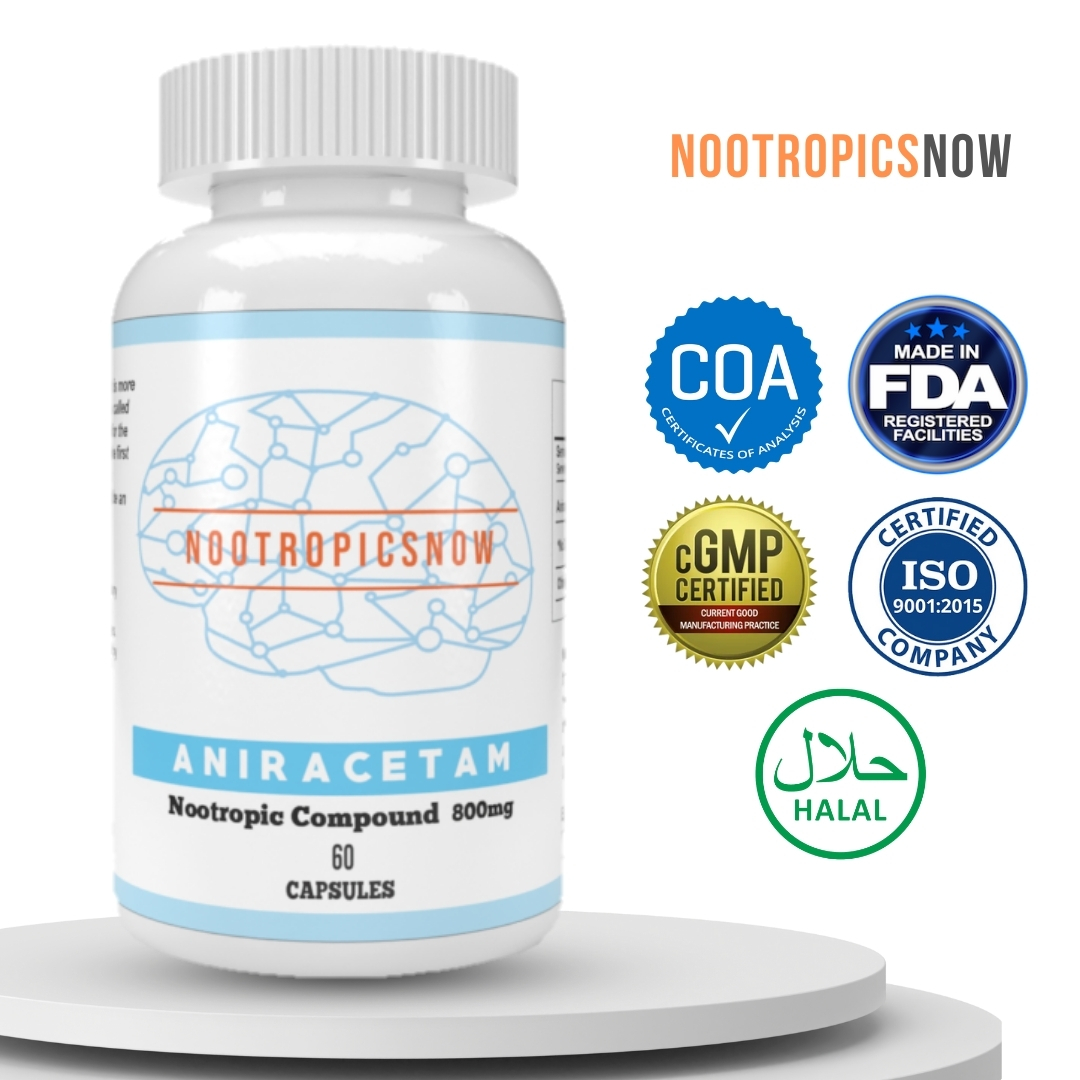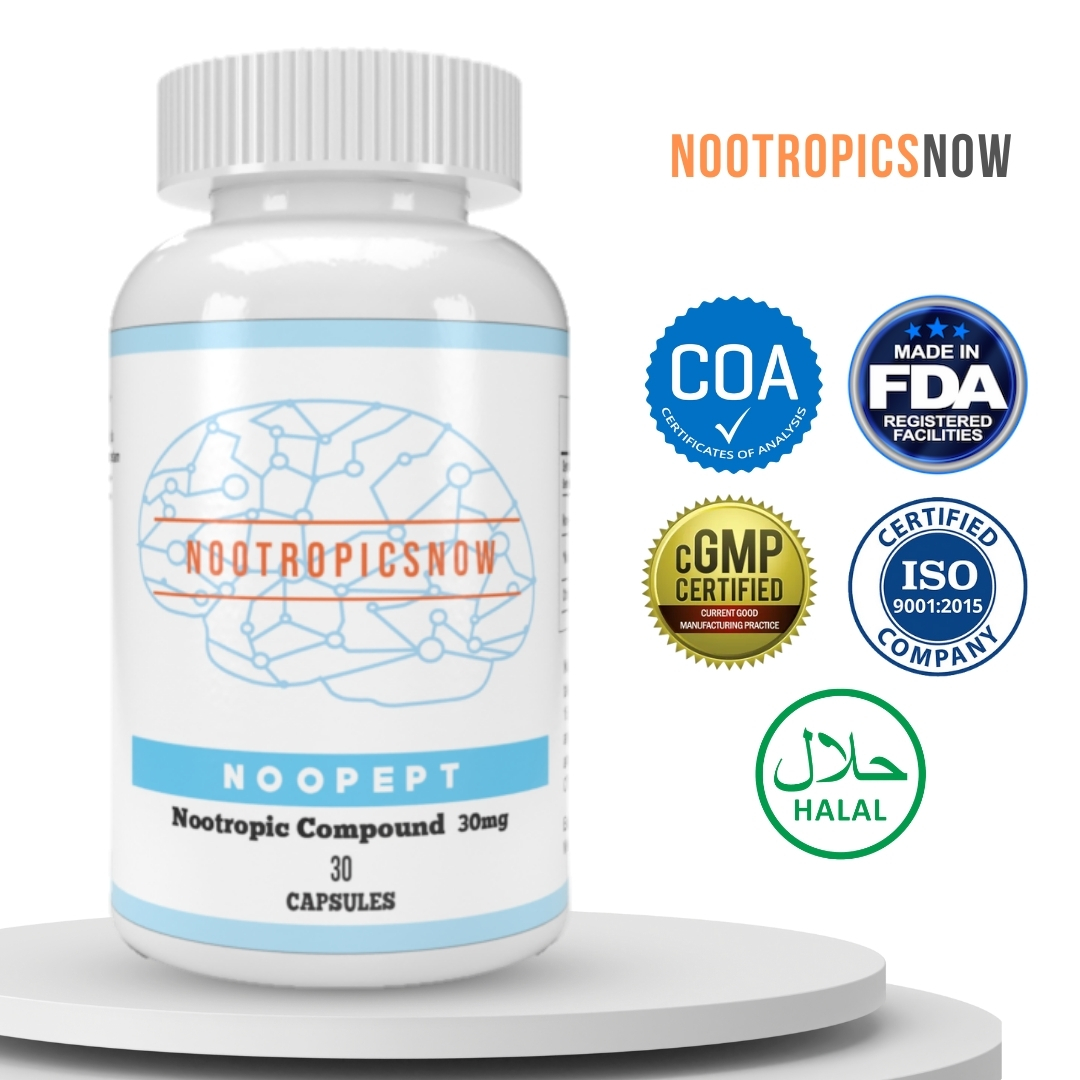Piracetam: Benefits, Dosage & Side Effects

`markdown
Nootropics Piracetam: Unlocking Cognitive Potential
Piracetam, a synthetic derivative of gamma-aminobutyric acid (GABA), holds a prominent position in the realm of nootropics. Widely regarded as one of the first nootropics ever developed, it has garnered attention for its potential cognitive-enhancing properties. This comprehensive overview will delve into the world of piracetam, exploring its mechanisms, benefits, usage guidelines, and safety profile. Moreover, we will compare it to other popular nootropics and discuss the current legal status surrounding its use.
Understanding Piracetam’s Mechanisms of Action
Piracetam’s precise mechanism of action is still subject to ongoing research. However, it’s believed to exert its effects through several pathways.
Modulating Neurotransmitter Activity
Although derived from GABA, piracetam does not directly interact with GABA receptors. Instead, it modulates the activity of other neurotransmitters, including acetylcholine and glutamate. Acetylcholine plays a crucial role in memory, learning, and attention, while glutamate is involved in synaptic plasticity. Piracetam seems to enhance the release and utilization of these neurotransmitters, thereby optimizing cognitive function.
Enhancing Membrane Fluidity
A critical aspect of piracetam’s action involves its interaction with cell membranes. It improves membrane fluidity, which is essential for optimal neuronal communication. Neuronal membranes, composed of phospholipids, influence the functioning of embedded proteins, including receptors and ion channels. By increasing fluidity, piracetam facilitates the proper functioning of these proteins, allowing neurons to respond more efficiently to stimuli.
Protecting Neurons
Piracetam exhibits neuroprotective properties. It protects neurons from damage caused by hypoxia (oxygen deprivation) and other stressors. This neuroprotective effect contributes to its potential benefits for cognitive health, particularly in age-related cognitive decline and neurological disorders.
Improving Cerebral Blood Flow
Piracetam has been shown to improve cerebral blood flow. Enhanced blood flow delivers more oxygen and nutrients to the brain, which can result in improved cognitive function and overall brain health.
Exploring Piracetam’s Potential Cognitive Benefits
The cognitive benefits associated with piracetam have been the subject of numerous studies, and the evidence suggests a range of potential improvements.
Memory Enhancement
One of the most well-known benefits of piracetam is its ability to enhance memory. Studies suggest that it can improve both short-term and long-term memory, making it a popular choice for students and individuals seeking to boost their recall abilities. Piracetam potentially aids memory consolidation and retrieval by enhancing cholinergic neurotransmission.
Enhanced Learning Capacity
Besides memory, piracetam also appears to improve learning capacity. It may facilitate the formation of new neural connections, making it easier to acquire new information and skills. This enhancement is particularly beneficial for those involved in academic pursuits or professions that require continuous learning.
Increased Focus and Attention
Piracetam can improve focus and attention span. It can help individuals stay on task and resist distractions, contributing to increased productivity and mental clarity. By modulating neurotransmitter activity, it promotes a state of alertness and concentration.
Enhanced Cognitive Processing Speed
Piracetam may accelerate cognitive processing speed. It allows the brain to process information more quickly and efficiently, resulting in quicker reaction times and improved cognitive performance. This effect can be advantageous in situations that demand rapid decision-making.
Improved Verbal Fluency
Some studies suggest that piracetam can enhance verbal fluency. Users may find it easier to express their thoughts and ideas clearly and articulately. This benefit is particularly useful for professionals who rely on effective communication in their daily work.
Guidelines for Using Piracetam Safely and Effectively
To reap the potential cognitive benefits of piracetam while minimizing the risk of side effects, it is crucial to follow specific usage guidelines.
Dosage Recommendations
Dosage requirements for piracetam vary depending on individual factors such as body weight, sensitivity, and desired effects. A typical starting dose ranges from 1.6 grams to 4.8 grams per day, divided into two or three doses. It is generally advisable to begin with a lower dose and gradually increase it until the desired effects are achieved.
Cycling Piracetam
Some users choose to cycle piracetam, meaning they take it for a certain period followed by a break. Cycling can help prevent tolerance buildup and maintain the effectiveness of the nootropic. A common cycle involves taking piracetam for several weeks or months, followed by a break of similar duration.
Piracetam Stacks
Many users combine piracetam with other nootropics to enhance its effects. This practice is known as “stacking.”
Piracetam and Choline
One of the most popular stacks involves piracetam and a choline source, such as choline bitartrate, alpha GPC, or CDP-choline. Piracetam increases the demand for acetylcholine, and supplementing with choline provides the building blocks for its synthesis. This combination can enhance memory and cognitive function.

View Product
Piracetam and Aniracetam
Some users stack piracetam with aniracetam, another racetam nootropic. Aniracetam has anxiolytic effects, which means it reduces anxiety, and may complement the cognitive-enhancing properties of piracetam.

View Product
Potential Side Effects and Precautions
Piracetam is generally considered safe and well-tolerated. However, some individuals may experience side effects, particularly at higher doses.
Common Side Effects
Common side effects of piracetam include headaches, nausea, insomnia, anxiety, and gastrointestinal upset. These side effects are usually mild and temporary and can often be mitigated by adjusting the dosage or taking piracetam with food.
Interactions
Piracetam can interact with certain medications, such as blood thinners. Individuals taking medication should consult with a healthcare professional before using piracetam.
Contraindications
Piracetam is contraindicated in individuals with a history of stroke, kidney problems, or bleeding disorders. Pregnant or breastfeeding women should avoid using piracetam due to a lack of safety data.
Comparing Piracetam with Other Popular Nootropics
The nootropic market is brimming with diverse substances, each claiming unique cognitive benefits. It’s important to understand how piracetam compares to some other popular nootropics.
Piracetam vs. Modafinil
Modafinil is a wakefulness-promoting agent often used to treat narcolepsy. While both piracetam and modafinil are used as cognitive enhancers, they have different mechanisms of action. Modafinil primarily enhances alertness and wakefulness, whereas piracetam primarily improves memory and learning. Modafinil is often associated with stronger stimulating effects.

View Product
Piracetam vs. Aniracetam
Aniracetam is another racetam nootropic that shares similarities with piracetam. However, aniracetam is more potent and has anxiolytic properties. Some users find that aniracetam has a more pronounced effect on mood and anxiety than piracetam.
Piracetam vs. Alpha GPC
Alpha GPC is a choline supplement. Although both are associated with cognitive enhancement, they work differently. Piracetam modulates neurotransmitter activity and improves membrane fluidity, while Alpha GPC provides choline to support acetylcholine synthesis.
Piracetam vs. Lion’s Mane Mushroom
Lion’s Mane Mushroom is a natural nootropic. It promotes nerve growth factor (NGF) production, which is essential for brain health. Piracetam is synthetic and has different mechanisms. Lion’s Mane is favored for long-term neuroprotective effects.

View Product
The Legal Status of Piracetam
The legal status of piracetam varies from country to country.
United States
In the United States, piracetam is not approved by the Food and Drug Administration (FDA) as a dietary supplement or medication. It is often sold as a research chemical or nootropic substance. The sale and possession of piracetam are generally legal, but it cannot be marketed as a treatment for any disease.
Other Countries
In some countries, such as the United Kingdom and Russia, piracetam is available as a prescription medication. In other countries, such as Canada and Australia, it may be available without a prescription. It is essential to research the legal status of piracetam in your country before purchasing or using it.
Purchasing Piracetam
Piracetam can be purchased from online vendors specializing in nootropics or research chemicals. Choosing reputable and trustworthy vendors is crucial to ensure product quality and purity. Look for vendors who provide third-party lab testing results to verify the composition of their products.

View Product
Is Piracetam Right for You? A Few Considerations
Deciding whether to use piracetam is a personal decision that should be based on your individual needs and circumstances.
Consider Cognitive Goals
If you are seeking to enhance memory, learning, focus, and cognitive processing speed, piracetam may be a suitable option.
Explore Alternatives
Before using piracetam, explore other nootropics and cognitive-enhancing strategies, such as lifestyle modifications, dietary changes, and natural supplements.
Consult with a Professional
Consult with a healthcare professional before using piracetam, especially if you have any underlying medical conditions or are taking medications.
Research and the Future of Piracetam
Although piracetam has been around for decades, ongoing research continues to explore its potential benefits and mechanisms of action. New studies may shed light on its effectiveness for various cognitive disorders and its neuroprotective properties. The future of piracetam may involve the development of more potent derivatives or combinations with other nootropics.
Conclusion
Piracetam is a synthetic nootropic with a wide range of potential cognitive benefits. It is thought to work by modulating neurotransmitter activity, enhancing membrane fluidity, protecting neurons, and improving cerebral blood flow. While it is generally considered safe, it is essential to follow usage guidelines and consult with a healthcare professional before using piracetam. By understanding its mechanisms, benefits, and potential risks, individuals can make informed decisions about whether it is the right nootropic to help unlock their cognitive potential.
`
Piracetam: Unveiling the Original Nootropic
Piracetam, as a foundational member of the racetam family, remains a subject of interest within the nootropics community. Its history, mechanisms, potential benefits, and safety profile warrant a detailed exploration. Since its synthesis in the mid-1960s, piracetam has been investigated for its influence on cognitive function and neurological conditions. Its continued use and study underscore its relevance in the realm of cognitive enhancement.
A Deep Dive into Piracetam’s Origins
The story of piracetam begins with Dr. Corneliu Giurgea, a Romanian scientist, who synthesized the compound in 1964 at UCB Pharma in Belgium. Giurgea coined the term “nootropic” to describe substances that met specific criteria, including enhancing memory and learning, protecting the brain from injury, and possessing minimal toxicity. Piracetam became the prototype of this class of compounds, setting the stage for future nootropic development. Initially, piracetam was explored for its potential in treating motion sickness. However, subsequent studies revealed its cognitive-enhancing capabilities, leading to its adoption as a nootropic agent.
Understanding Piracetam’s Multifaceted Mechanisms
Piracetam’s mechanisms of action are complex and not fully understood, though research offers insights into its effects on brain function. It is a cyclic derivative of GABA (gamma-aminobutyric acid), an inhibitory neurotransmitter. However, piracetam does not directly bind to GABA receptors. Instead, it appears to work through other pathways to influence cognitive processes.
Exploring Piracetam’s Clinical Applications
Piracetam has been investigated for a wide range of clinical applications, with varying degrees of success. Some of its uses have included:
Assessing Piracetam’s Vascular and Hemorheological Effects
Beyond its direct effects on neuronal function, piracetam also influences vascular and hemorheological properties.
Piracetam: Safety Profile and Potential Side Effects
Piracetam is generally considered safe and well-tolerated, but it is essential to be aware of potential side effects.
Considerations for Dosage and Administration
The optimal dosage of piracetam can vary depending on the individual and the condition being treated. There is no universally agreed-upon dosage, and it is often recommended to start with a lower dose and gradually increase as needed.
Regulatory Status and Availability
The regulatory status of piracetam varies across different countries. In some countries, it is available as a prescription medication, while in others, it is sold as an over-the-counter supplement or research chemical.
Piracetam Stacks: Synergistic Combinations
Many users combine piracetam with other nootropics to enhance its effects. These combinations, known as stacks, aim to create synergistic effects that surpass the benefits of individual compounds.
Research Landscape for Piracetam in 2024
The continued study and re-evaluation of piracetam underscore its ongoing relevance. Recent research directions include:
Conclusion: A Timeless Nootropic
Piracetam, the original nootropic, remains a fascinating and widely used substance. Its mechanisms of action, clinical applications, and safety profile continue to be investigated. While its effects may be subtle for some, many users report significant cognitive benefits. As with any nootropic, it is essential to approach piracetam with caution, conduct thorough research, and consult with a healthcare professional.

View Product




